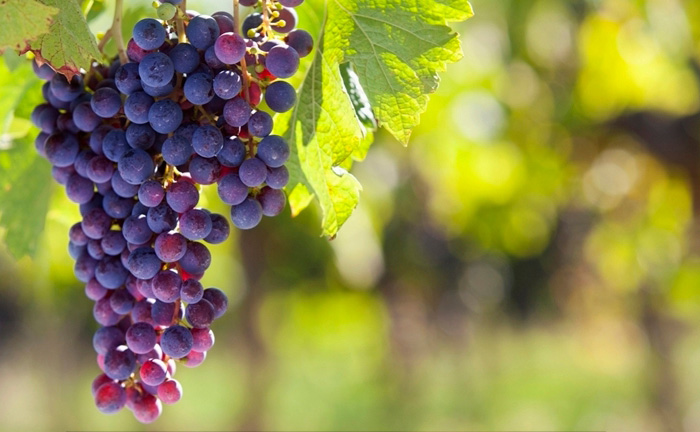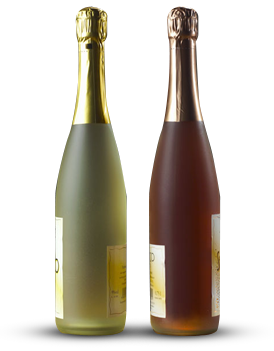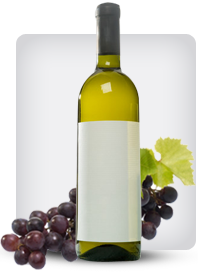

Tag: Wine
The Value of Kosher Wine Aeration
Posted onAs a true wine lover, I do not just love to drink it. I love the process of winemaking, I love the decisions a vintner makes to perfectly blend or age a superior wine. I also love the rating system discussions since there is so much room for subjectivity. One genre of wine that often gets ignored is that of kosher winemaking. It is a process of steps that are essential for Judaism, and I have recently learned the value of Kosher wine aeration. Prior to utilizing my Wine areator on the Palwin No. 10 that was purchased, I familiarized myself with the steps of the kosher winemaking.
Like the majority of kosher products, it must receive a seal of approval to receive the label “kosher.” While the winemaking process rarely uses any of the forbidden foods in the typical fermenting and bottling process, there is an element that makes this product different from all others. Kosher wine is actually cooked or boiled, as this is considered to make it unfit for pouring to or for an idol. This follows the laws of Judaism and will keep the kosher status if it is subsequently touched by a an idolater(someone who worships to an idol.)
I have found this process very interesting as kosher wine has a very different taste and bouquet than regular wine. This cooking process also gives the need for aeration in order to bring out the most flavor, and maximize the value of your purchase.
When sniffed my very first pour of kosher wine, I noticed the smell was not quite as vibrant as the Pinots and Cabernets I typically drink. The flavor itself seemed stale, and I knew immediately the wine should be exposed to as much oxygen as possible. Utilizing a decanter seemed in order to make sure there was consistency and a breakup of accrued sediment, but I did not have one available.
The process of exposing the wine to oxygen, also know as letting a wine breathe, is greatly increased when using a decanter or wine aerator as the surface area of the wine is maximized. Since my trusty Wine aerator was on hand, it was used for two separate pours into separate wine glasses.
To make sure I was increasing the surface area of the kosher wine as much as possible I utilized the largest wine glasses available. The shape and volume of the glass allowed for efficient swirling, and increased the oxygen appropriately following the wine aeration.
The bouquet of each glass of wine changed dramatically. Each glass of wine smelled fantastic, and the aroma smelled much more of fruit, as it should. The most dramatic change was in the flavor of the wine, as it went from stale to beautifully aromatic. This was only after a minute of breathing following aeration.
While I may have other wines I would prefer to drink over kosher wine, the aeration with the Wine Weaver proved valuable and certainly brought out the most out of my bottle of kosher wine. If your drink kosher wine at family functions, make sure you bring your wine aerator because everyone will thank you.
Falanghina wine in Positano
Posted on
When You book a nice apartment in Positano Apartment in Positano – Amalfi Coast, with us You’ll realize how beautiful and magic this town is.
The dream came true four decades ago, in ’62, and Ettore Sammarco speaks with emotion and pride. His family always made wine. Their farm is an ancient tradition. But like so many here in the South, selling bulk wine and say anonymously. Although it was very popular, but paid badly. So for years the goal of Hector was to bottle the wine, to treat him better and distributed to restaurants and wine shops are able to appreciate its quality. The large steel silos lay siege to the cellar, the last witness of what was the old company. Which, without prejudice to any more advanced technology, retains the character and structure of the past. Beginning with the family, he sees next to the boss Hector, the son Bart, both working on the production front, while Rosa Maria and Antonio, two daughters, following the administrative and commercial sector.The Doc Amalfi Coast in ’95 gave an extraordinary impetus to the wine production area. A consecration certainly deserved, even if the name of Ravello had a history when it comes to wines.
The guideline has avoided the risk that under this name were marketed mediocre wines with grapes and bastardized. The company under the label Selva delle Monache (the trademark) produces the Ravello Doc in its white, red and rosé.The soil is clay – and the volcanic system of animal husbandry in double Guyot, trellis and pergola. Beyond these common data, each wine has its own path. The white (60% Falanghina, Biancolella 40%) passes from the perfect ripeness of grapes at controlled temperature maceration and subsequent stay in steel for five months. The Ravello Red (40 Piedirosso%, 30% and 30% Aglianico Sciascinoso) has instead a prolonged contact with grape skins for a tannic, and after three months in stainless steel is aged for a year in French oak barrels.Also under the label Selva delle Monache, the Sammarco also produces a Ravello Rosso Riserva, made from Aglianico Piedirosso 70% and 30% is vinified with a short maceration on the skins with the must, then aged six months in steel. Bartolo Sammarco speaks with pride of Ravello Bianco, who does not hesitate to define rare. In fact it is produced only in the best years and about three thousand bottles. It’s the strict selection of grapes a result very happy (Broom 40% and Zita White Biancolella 20%). The grapes all come from the Vineyard Plains Cave, which enjoys a unique exhibition between sea and mountains. Hence the fruity bouquet and a hint of vanilla and toast.
The reference is again to the territory and effort that involves the care of the vineyard. They call it heroic viticulture, but on the Amalfi Coast is not known another type of farming. These terraces and pergolas these, and no one would know otherwise conceive.The Doc Ravello produced by Ettore Sammarco enjoy wide recognition. In the vortex of illustrious, that make Amalfi and its region the privileged refuge of the worlds of art, politics and entertainment, the Selva delle Monache took the bench. Schroeder from Zeffirelli to the great soloists and conductors’ s participating in the festival orchestra in Ravello, all these celebrated wines. And no one has given up a few bottles to take away.
Book our apartment in Positano, and You’ll enjoy the unique atmosphere of this beautiful town
Related Syrah Wine Articles
Piedirosso wine in Positano
Posted on
When You book a nice apartment in Positano Apartment in Positano – Amalfi Coast, with us You’ll realize how beautiful and magic this town is.
At sunset, the town is the only producer and winemaker Joseph Apicella. His wine making from time immemorial, although until the ’75 sold in bulk, everywhere there were wine bars and restaurants can appreciate a good red, that had nothing to envy to the most famous wines. Then, Peppe Apicella (that’s how his friends call him) began to bottle his wine and courageously to propose around Italy, especially where the presence of his fellow villagers had given rise to the emergence of restaurants and pizzerias. This applies, in fact, that by Sunsets are irradiated throughout Italy for generations of pizza, that the example of Louis Jordan, who was the first after the war he opened a pizzeria in Loreto di Novara.The expansion and success come from the eighties, though Apicella remains committed to the principle that only a small winery can provide those treatments that require a good wine. So the five acres of family were the ones with the old screws Piedirosso and Aglianico, foot works, and with a yield on the ninety quintals per hectare, well below the 110 expected to be disciplined in ’95.
The company produces white, red and rosé for a total of forty thousand bottles, with a predominance of red, the type not only more distant tradition, but most in demand by the market. And it was the growing success of this wine to push Apicella to create, since 2000, a Rosso Riserva Vigna battered three thousand units, based on 60% and Aglianico Piedirosso, with three years of aging, including two in bottle. Vigna battered represents the first milestone of the family Apicella, where even the children – Prisco young winemaker, and Fiorina, studies in business – live with love and the fate of the transport. At first this was followed a’Scippata Reserve, which is indicated by the name of the local vineyard, all on foot works, which originally appeared rugged and steep, as often is the territory here. The fund was established in the early thirties with the purchase of the forest that the Old Forest, an excellent investment for the particular nature of the land and all the happy position at noon. Just one hectare, to break up by force of arms and an ax, before planting the cuttings and Piedirosso Dyer, rigorously chosen among the best in the area.
Then, the wise provision of the grape in the framework, where each item includes five cuttings together. Ordered geometry, which gave rise to a series of plots, each capable of containing three rows of vines grown on pergolas, with the typical plant chestnut poles.Since 1931, a period in which it is born a’Scippata – apart from the modern equipment and new winemaking techniques – here nothing has changed. Peppe Apicella, heir to the vineyard, I worked as his ancestor, with operations carried out manually, given the rugged nature of the place. Pruning, tying the branches, the change of guardians, we always refers to gestures and techniques of the past. Careful harvest in early November – a date not to be overlooked for a grape rather delicate as the dye – can count on only forty pounds, or just over one hectare of vineyard. Then in the cellar, that philosophy requires a delicate baling and a long fermentation on the skins for better respect of the original character of the grape
Book our apartment in Positano, and You’ll enjoy the unique atmosphere of this beautiful town
Easy Red Wine Stain Removal Technique
Posted onLike most people, you may have had the experience of having a red or rose wine spill on your rug, clothes, or table covers. This is not good because leaving it on the fabric for too long results in a stain that can be hard to remove. Here is an easy red wine stain removal method that works.
First thing you need to do is blot the spot right away (make sure not to press into it) with a napkin, paper towel, or a dry white cloth and try to take out as much of the wine as possible.
If the stain is on your carpet, mix one teaspoon of natural dish soap (Dawn is a good brand to use) with a cup of hydrogen peroxide and pour it over the stained part and leave it to soak for a few minutes. Then watch the red wine fade away. After, you can rinse any residue with water, blot with a dry cloth or paper towel, and put some salt on the spot (salt helps remove moisture). Allow to dry few hours or all night and then vacuum the spot.
Red wine stain removal methods on fabric such as your clothing or tablecloth are a little different. First, run cold water through the back side of the stain. Some people say that pouring white wine over the stain will help remove it. I have never tried this one myself, though, but it seems a bit odd to me that a solution to red wine stain removal would be to add more wine. Of course, you can try it, then let me know if it works.
Still, if running water through the opposite end of the stain does not help remove it, then do the following: Combine 1 cup of water, 1/2 cup of hydrogen peroxide, and a little bit of dish soap in a spray bottle and apply the solution on the area. It is better that you wash your clothes immediately, so that the peroxide doesn’t have time to settle and bleach your clothing.
You can use this method of red wine stain removal on coffee and tea stains as well.
Food and Wine Pairing
Posted onFood and wine pairing, as a conscious act, is something relatively new in society. Food and wine pairing refers to the effort, and in fact the refined skill, in matching foods and wines and wine brands in a way that results in a pleasurable dining experience.
The whole idea of food and wine pairing is somewhat amusing if you
remember that wine was at one time was not considered something special like it is today. In older, classic societies wine was just what people drank. Nobody knows how it would compare to today’s wines. Certainly some of it was better than others.
But still……. It’s what people drank before there were such commercial beverages as Coke, iced-tea, energy drinks and homogenized milk.
The pairing of wine with food probably is something new because people in these older cultures didn’t have the variety of diet that many people have today. They didn’t have the luxury or option of choosing one wine or one food over another.
But we do so………. Here we are.
Today’s idea of wine and food pairing focuses on one particular aspect of foods and wines….. The ‘weight’. This ‘weight’ factor is further divided into ‘texture’ and ‘flavor’. Certain foods and certain wines are considered to be either light or heavy in weight. There’s a ‘medium’ in there somewhere too.
‘Matching’ prescribes that light wines go with light foods and heavy wines go with heavy foods. Pretty simple really. However the reality of the matter is that there’s a substantial degree of subjectivity involved in one’s preference for one wine brand over other wine brands.
What might be considered ‘a perfect match’ by one taster might not be considered so by another. But at least it makes jobs for some people in very fancy restaurants.
Here are some examples of these food and wine characteristics as commonly accepted:
Cabernet Sauvignon is generally considered to be a heavy or robust wine. As such, one would generally not take it with something like quiche which is generally considered a ‘light’ food. Similarly a food dish as heavy and robust as stew could not be properly served with a light bodied wine like Pinot Grigio.
Connoisseurs of this subject also like to discuss such things as the acid, alcohol, tannin and sugar concentrations in wine and how they relate enhance, or not, certain types of foods.
One of the most common occasions when people get together to practice their wine pairing and wine tasting skills is in cheese and wine tastings. And sometimes they’ll just forget the cheese and go for the wine tasting. Cheese is for mice anyway, right? 🙂
It’s an interesting subject if you’ve got the time and money. But the bottom line as always is personal preference. There are actually wine paring clubs where people get together for wine tastings and to discuss the finer points of their preferences and opinions.
popular posts
-

How to Decant Merlot Properly: A Guide to Unlocking Its Full Potential Merlot, with its plush texture and approachable profile of plum, cherry, and chocolate notes, is one of the world’s most beloved red wines
12-22 2025While often enjoyed straight from the bottle, taking the time to decant a Merlot can dramatically elevate the experience. Decanting serves two primary purposes: Read More
-

Pinot Noir Wine Subscription Reviews: A Curated Journey for the Discerning Palate For wine enthusiasts, few grapes inspire as much devotion and discussion as Pinot Noir
12-21 2025Celebrated for its elegance, aromatic complexity, and remarkable ability to express *terroir*, Pinot Noir can be both thrilling and intimidating to explore. This is Read More

